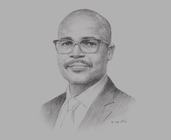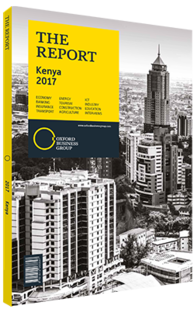Paul Zeleza, Vice-Chancellor, United States International University (USIU): Interview

Interview/: Paul Zeleza
What should be done to address the relatively high student-teacher ratio?
PAUL ZELEZA: A high student-teacher ratio is not just a Kenyan problem, it is a global one. The first issue is that demand for higher education is outpacing supply. Universities have been expanding, but human resources has not kept up. Addressing this problem will partly involve investment into education, as it is through this that faculties are built. Brain drain plays a role, but even if the Kenyan diaspora returned, the problem would not be completely eradicated.
Africa is undergoing a demographic explosion, and the commensurate rise in demand for higher education cannot be solved just by reversing the flight of talent. A demographic dividend can only be realised if there is a focused effort to meet the increasing demand for higher education. One other thing that could be done is to increase dialogue between academia, the private sector and the government. The challenges faced by each of these segments cannot be solved if they work in silos. All three require evidence-based research and development (R&D), which can only be facilitated by inter-sectoral engagement.
How can collaboration between the private sector and higher education be increased?
ZELEZA: There are several ways this can be achieved. First, private sector entities could invest in research that is relevant to their businesses, and which universities can engage with. Very little science, technology and innovation research is being conducted in collaboration with the private sector, and this is an area where there are opportunities for mutual gain.
Secondly, industry has the chance to work with universities directly to develop curricula. This means we at the universities have to listen. You will often hear that there is a mismatch between the skills needed in industry and those of university graduates. This gap can only be narrowed through greater engagement over curricula. To do this, we should make sure that university advisory boards are supported by representatives from industry. This collaboration could provide information to universities about industrial trends and deficits in skills, which could then be incorporated into curricula. In return, we can also elucidate trends in higher education to industry players and discover where the two intersect. The third issue is the importance of exposure to practical problems through experiential learning, from research projects to internships. The impacts of the suggestions are self-evident. University presidents could also be more proactive by spending time engaging with these other parties outside their institutes. R&D is mostly being conducted overseas, but industry cannot continue to recycle innovations from abroad. The government is planning to push R&D spending to 2% of the budget, which could be a game-changer, as the average in Africa is around 0.5%, compared to the world average of 1.7%. Hopefully, this move will underline the benefits of research to the private sector. If this political intent is followed through, Kenya will be well-poised to become a regional hub for research.
How can tertiary education best balance the demands of students with the needs of the market?
ZELEZA: Tertiary education could benefit from clearer articulation of the entire system, from primary to higher education. Tertiary-level learning should also occur as part of a broad system, which includes non-university institutions such as vocational schools. There has been academic drift in the vocational sector and vice versa, but both of these trends should be fostered according to their own merits. The tertiary sector needs to cater to the needs of school graduates and the labour force. Lastly, higher education in Africa is “late to the game”, and given the lower level of institutional baggage that exists, it has the potential to leapfrog certain educational conventions.
You have reached the limit of premium articles you can view for free.
Choose from the options below to purchase print or digital editions of our Reports. You can also purchase a website subscription giving you unlimited access to all of our Reports online for 12 months.
If you have already purchased this Report or have a website subscription, please login to continue.

